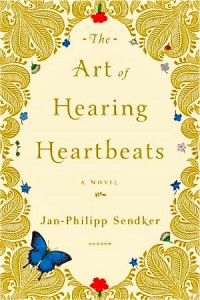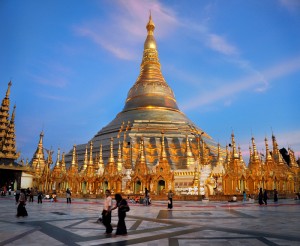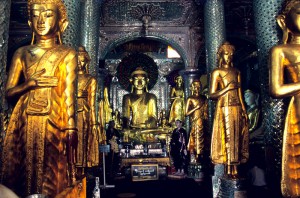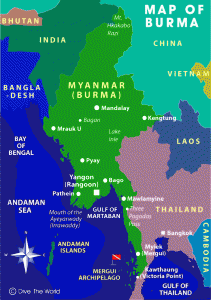“I speak of a love that brings sight to the blind. Of a love stronger than fear. I speak of a love that breathes meaning into life, that defies the natural laws of deterioration, that causes us to flourish, that knows no bounds. I speak of the triumph of the human spirit over selfishness and death.”
 It is easy to see why this novel, published in the author’s native Germany in 2002, has been such a resounding popular success there for the past three years, with booksellers giving it rave reviews, hand-selling it, and in one case even telling customers “they can bring it back if they don’t like it…[and] get their money back, no questions asked.” Nobody has ever returned it. Word of mouth and book club interest have done the rest, making the book a huge best seller. Newly translated into English, the novel is now available here, and it will be interesting to see if its story “travels” as well to the US and UK.
It is easy to see why this novel, published in the author’s native Germany in 2002, has been such a resounding popular success there for the past three years, with booksellers giving it rave reviews, hand-selling it, and in one case even telling customers “they can bring it back if they don’t like it…[and] get their money back, no questions asked.” Nobody has ever returned it. Word of mouth and book club interest have done the rest, making the book a huge best seller. Newly translated into English, the novel is now available here, and it will be interesting to see if its story “travels” as well to the US and UK.
Jan-Philipp Sendker’s The Art of Hearing Heartbeats pulls out all the stops. Set in Burma (now Myanmar), it is the consummately romantic story of an abandoned and traumatized orphan boy, Tin Win, whose adoptive mother and the monks at the local monastery slowly enable him to make connections with the world beyond. It is both a look back at the past and a look forward into the future, as the boy’s story develops and he learns to love. The novel is also a triumph over adversity, as two characters, one blind and one crippled, movingly overcome their “handicaps” and no longer see themselves as any different from anyone else. The blind character learns to listen to the world so carefully that he can find people by listening for their unique heartbeats. The crippled character has a voice so beautiful that people come for miles to hear her sing. And it is also a novel of suspense, as Julia Win, the young American daughter of Tin Win, searches for her missing father, traveling into rural Burma in search of the writer of a love letter from almost fifty years ago, which Julia has found among her father’s effects. Throughout the novel, the involvement of Burmese astrologers and helpful Buddhist priests add another dimension, both magical and mystical, to the thinking of the Burmese characters. Stories within stories within stories keep the love stories swirling and the sense of otherworldliness growing.
he learns to love. The novel is also a triumph over adversity, as two characters, one blind and one crippled, movingly overcome their “handicaps” and no longer see themselves as any different from anyone else. The blind character learns to listen to the world so carefully that he can find people by listening for their unique heartbeats. The crippled character has a voice so beautiful that people come for miles to hear her sing. And it is also a novel of suspense, as Julia Win, the young American daughter of Tin Win, searches for her missing father, traveling into rural Burma in search of the writer of a love letter from almost fifty years ago, which Julia has found among her father’s effects. Throughout the novel, the involvement of Burmese astrologers and helpful Buddhist priests add another dimension, both magical and mystical, to the thinking of the Burmese characters. Stories within stories within stories keep the love stories swirling and the sense of otherworldliness growing.
The basic story line opens with U ba, a Burmese priest, approaching Julia Win in a tea house in the rural mountain village of Kalaw, in Burma, telling her that he has been awaiting her arrival for four years. Startled, since Julia does not know him, she wonders, at first, if he represents a scam, since she has just arrived from New York, searching for her father, who disappeared four years ago. Soon, she is learning her father’s background from U ba, a rewarding experience, since even her own mother never knew anything about Tin Win’s life before he was twenty years old. Born on a Saturday in December, an astrologically disastrous day, Tin Win had entered a hostile world in which both his parents rejected him because the local astrologer had told them that “the child will bring sorrow on his parents.” Later abandoned, he was taken in by a neighbor and schooled at the monastery.
Time in this novel is not linear, with Julia suddenly remembering and retelling one of her father’s stories about a strict king who made his son study, morning and night. Then the prince falls in love. His friendship with a crocodile introduces imagery which continues throughout the novel and expands the love theme and its connection to place. Another early diversion from the main story occurs with the story of U May, the abbot of the monastery to which Su Kyi, Tin Win’s adoptive mother, takes Tin Win in an effort to coax him out of his emotional darkness. U May’s own love story parallels in many ways the story which eventually grows up around Tin Win, a sad story with symbolism (or sense of foreboding) on several levels.
U ba’s stories of Tin Win grow with the introduction of Mi Mi, the young girl he loves, and the novel becomes almost a morality tale, with many statements about the nature of life and love: “Love has so many faces that our imagination is not prepared to see them all…because we see only what we already know. We project our own capacities – for good as well as evil – onto the other person. Then we acknowledge as love primarily those things that correspond to our own image thereof. We wish to be loved as we ourselves would love. Any other way makes us uncomfortable.” A poem by Pablo Neruda asks us, “How much does a man live, after all?/ Does he live a thousand days, or only one?/…What does it mean to say ‘for ever’?” Another adage asserts that “Life is a gift that none might disdain…Life is a gift full of riddles in which suffering and happiness are inextricably intertwined.”
The stories are told with detail which keeps them fresh, but they are recited at us by a good storyteller, primarily U ba, the action not being recreated in a way which makes the reader feel s/he is actually participating directly. This makes the novel seem “talky” – conversational – and leaves the burden on the reader to imagine it and make it feel lively and personal. Some of the plot feels operatic, and on a couple of occasions, I thought of Mimi in La Boheme as a parallel to Mi Mi in the novel. With all the aphorisms and commentary about life and love, the novel sometimes has a moralistic, ponderous tone, which is certainly in keeping with the lessons being given by the monks but which many readers prefer to glean for themselves from plot elements which ideally illustrate themes more subtly. Still, Sendker’s descriptions and his setting in Burma, a country which few readers know, lend a sense of atmosphere and mystery to the novel, and his often lyrical approach to the points of view of Tin Win and Mi Mi creates a charming romance which will keep many readers fascinated.
Photos, in order: The author’s photo is from http://meng-gemeng.rtl.lu
The photo of Kalaw, by Christina Koukkos, appears on http://www.theexpeditioner.com
The Schwedagan Pagoda and the Golden Buddhas, which Julia visits, appear on http://wanderinground.wordpress.com and on http://www.heybrian.com/
The map of Burma/Myanmar is from http://www.divetheworldburma.com




